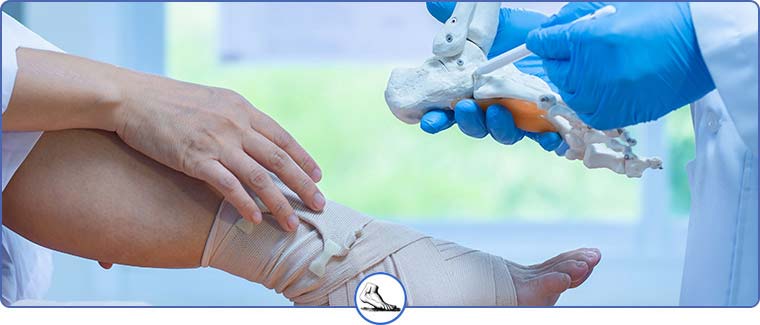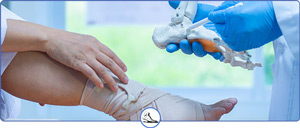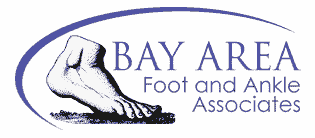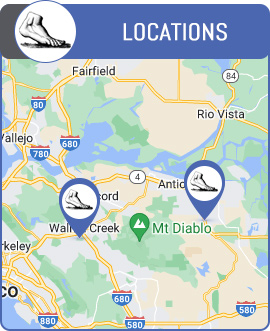Bone Spurs Treatment Clinic in Walnut Creek CA, and Brentwood, CA
Bony projections called “bone spurs” grow along the edge of bones. Osteophytes, or bone spurs, frequently develop where bones meet. Untreated bone spurs may enlarge and irritate nearby tendons, ligaments, or nerves painfully. At Bay Area Foot and Ankle Associates, Dr. John W. Scivally, DPM, and Dr. Robin K. Lie, DPM, provide efficient treatment to lessen discomfort and inflammation. For more information, contact us or schedule an appointment online. We have convenient locations to serve you in Walnut Creek, CA, and Brentwood, CA.


Table of Contents:
What triggers bone spur pain?
What causes bone spurs?
Where can bone spurs grow?
How are bone spurs treated?
How long does it take for a bone spur to dissolve?
Osteophytes, more commonly known as bone spurs, are formations of extra bone that occur on the ends of bones. They most commonly form in the joints, which is the intersection of where two bones meet.
While many bone spurs exist without causing problems, others can press against bones and nerves, the result of which is pain, discomfort, and stiffness. In these cases, it’s important to seek medical intervention so that you can manage your pain and resolve the issue as soon as possible.
If you’ve recently been diagnosed with a bone spur and would like to discuss your treatment options, contact us at Bay Area Foot and Ankle Associates. Our team of specialists will provide you with the safe, professional, and effective treatment you need so that you can get back to doing the things you love. Reach out today about our bone spur services or book online at your earliest convenience.
Bone spurs typically only cause problems if they’re pressed up against a nerve, tendon, bone, or other structure of the body. If you have an active bone spur, you may aggravate your symptoms by exercising or trying to move the affected area.
This can result in symptoms such as:
– Pain in the affected area.
– Stiffness in the affected joint.
– Weakness, numbness, or tingling.
– Muscle spasms.
– Cramping.
– Weakness
– Bumps under your skin.
In some cases, a bone spur may break off and get lodged in the lining of the joint. This can cause the joint to lock up, causing pain and making it difficult to move.
Several factors may contribute to someone developing a bone spur, with the most common cause being joint damage. This typically stems from osteoarthritis, degenerative joint disease, or any disease where the cushioning between your joints starts to deteriorate. When this begins to happen, your body’s natural defense is to try and fix the issue by adding bone to the affected area; the result of which is a bone spur.
Other common causes of bone spurs are:
– A poor or nutritionally deficient diet.
– Genetics.
– Hereditary bone issues.
– Narrowing of the spine.
– Obesity.
– Overuse of an area.
A bone spur is a bony lump that develops after a long period, growing off a bone and usually in the area of a joint. Bone spurs can develop on any bone; however, the most common areas for spurs to grow are in the:
– Feet
– Hands
– Hips
– Knees
– Neck
– Shoulders
– Spine
Depending on where your bone spur is located, and the severity of your condition, Dr. John W. Scivally, DPM, and Dr. Robin K. Lie, DPM will provide you with a custom treatment plan to aid in your recovery. This may include treatments such as:
– Cortisone shots.
– Ice to reduce pain and/or swelling in the area.
– Over-the-counter pain relievers.
– Physical therapy.
– Prescription pain medications.
– Rest and elevation.
– Supportive shoes or shoe inserts.
– Surgery.
– Weight loss to decrease stress on the joints/bones.
Treatment methods will often be used in combination with each other to provide the best results. However, if your symptoms don’t improve over time or are getting worse, you should consult with your healthcare provider as this may be indicative of a worsening condition.
Bone spurs can cause pain, inflammation, and limited mobility which is why it’s important to seek treatment from a qualified medical professional early on. In most cases, a combination of physical therapy, medication, and at-home remedies can help bone spurs to dissolve. However, in more severe cases, you may require surgery to remove the bone spur completely.
Healing a bone spur can take anywhere from 2-8 weeks, depending on the severity of the spur, the complexity of your condition, and how well you adhere to the treatment plan that your doctor provides. The longer you put off getting medical treatment, the longer it will take to resolve your issue in full and the more likely it will be to come back later down the line.
If you need treatment for a bone spur, reach out to us at Bay Area Foot and Ankle Associates. Our team specially trained medical staff would be happy to provide you with the high-level support and care you need to elevate your quality of life. For more information, contact us or schedule an appointment online. We have convenient locations to serve you in Walnut Creek, CA, and Brentwood, CA. We serve patients from Walnut Creek CA, Brentwood CA, Concord CA, Pleasant Hill CA, Pittsburg CA, Antioch CA, Alamo CA, Danville CA, Oakley CA, and surrounding areas.

Additional Services You May Need
▸Custom Foot Orthotics
▸Ingrown Toenail Specialist
▸Traditional Podiatry Care
▸Foot and Ankle Surgery Clinic
▸Bunion Doctor
▸Corns and Calluses
▸Foot Arthritis and Joint
▸Warts
▸Video Gait Analysis
▸Athletic Taping
▸Pediatric Foot Specialist
▸Gait Abnormalities
▸Foot Dermatologist
▸Foot Deformities
▸Chronic Foot Injury
▸Diabetic Foot Specialist
▸Acute Foot Injuries
▸Podiatric Sports Services
▸Plantar Fasciitis Specialists


